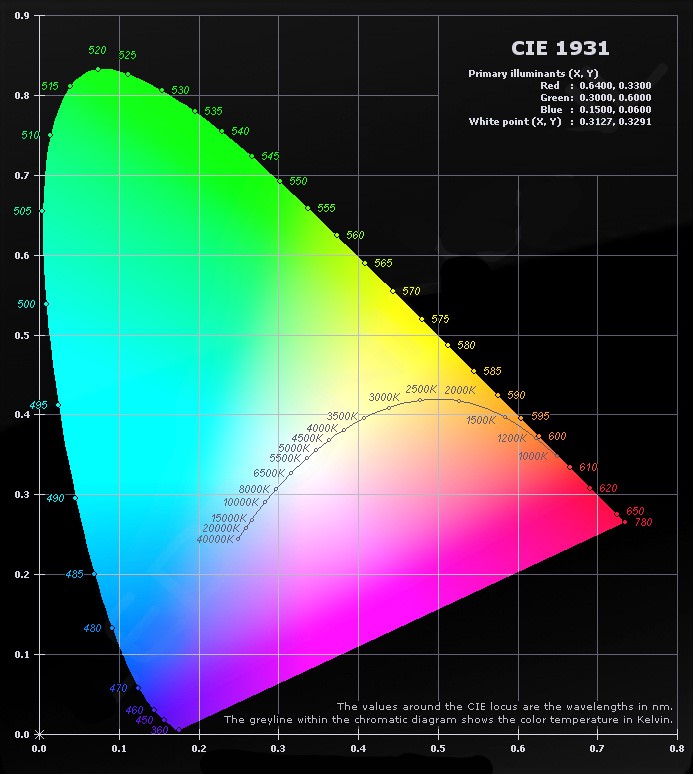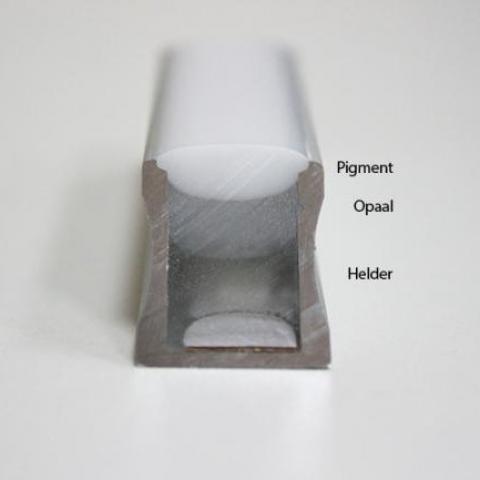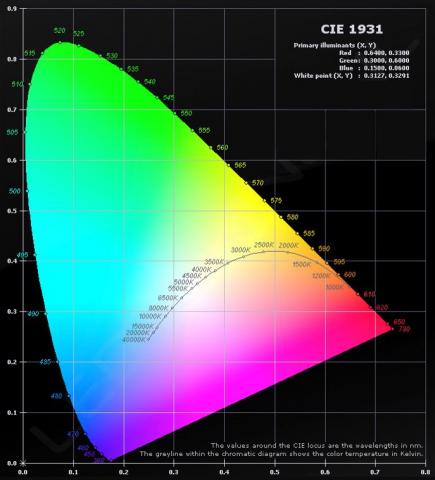CIE color spaces
The spectrum of the visible light
The electromagnetic spectrum includes the visible spectrum and the cosmic rays, gamma rays, X-rays, ultra violet and infrared, radio waves and electromagnetic waves. The visible spectrum is the part of the electromagnetic spectrum that can be seen by the human eye. Electromagnetic radiation within this spectrum is also called visible light. The visible spectrum is often divided into seven colors.
Wavelengths
The visible spectrum has a wavelength between approximately 400 nm (violet) and 750 nm (red). That equates to a frequency of approx. 400 THz (red) to 750 THz (violet). The different wavelengths are seen as different colors. However, the visible spectrum does not contain all the colors that the human brain and eyes can distinguish. For example, variations are missing such as magenta: this color can only be created by mixing two colors.
International commission on lamination (CIE)
Mathematical relationships defining color spaces are essential color management tools, important when dealing with color inks, lighting, and recording equipment. The system was designed in 1931 by the International Commission on Illumination. The CIE is the committee that sets standards in the field of light, light sources, color and color space.
Color spaces
The CIE 1931 color spaces are the first defined quantitative relationships between wavelength distributions in the electromagnetic visible spectrum and physiologically perceived colors in human color vision. The CIE 1931 color space is still used today as the standard for defining colors and as an essential tool for color management and color comparison. As does the 1976 CIELUV color space. The figure below is a two-dimensional representation of colors of the same intensity (brightness), according to the standard CIE 1931 observation. However, a complete representation of colors is three-dimensional, with the z-axis representing the brightness.

The CIE 1931 color space chromaticity diagram with wavelengths in nanometers.
The three-dimensional image looks like a pyramid. This color space cannot be used to show the difference between the colors. That’s why this system was further developed to the CIELAB-system.The original CIE chromaticity diagram has been converted by LuxaLight to the RGB color space (see above CIE diagram). It is a reasonable approximation of the true CIE standard in terms of color rendering.
The color temperature is defined using the CIE color chart. This is a diagram that contains a triangle containing the primary colors: blue, green and red. A mixture of these colors produces the color white and this "color" therefore forms the center of the triangle. Within the center (white part) of the triangle is a curve, also called the "black radiator", which ultimately determines the color temperature of white light.
Color temperature
Measured on the basis of the color temperature, the color consistency is expressed in Kelvin (K). The color temperature reflects different shades of white light. Think of the various white tones such as extra warm white light, warm white light, neutral white light, cool white light, etc.
From the CIE 1931 diagram we have also converted the color temperature to the RGB color space and stated the corresponding color temperature.

Color spectrum
The color spectrum consists of the colors of the rainbow; with the color sequence red-orange-yellow-green-blue-indigo-violet (ROGGBIV), which corresponds to the falling wavelength (rising frequency) of the light waves.
From the CIE 1931 diagram we have converted the wavelength of each color (in steps of 0.1nm) to the RGB color space and stated the specific wavelength for each 5nm. Color spectrum, accurate perception of color with the corresponding wavelength.

Color consistency
The color consistency of lighting refers to the constant quality of the color of light. Color consistency matters for both colored and white light. For example, if different light sources are used during a project, it is important that there is no difference in the light color.


